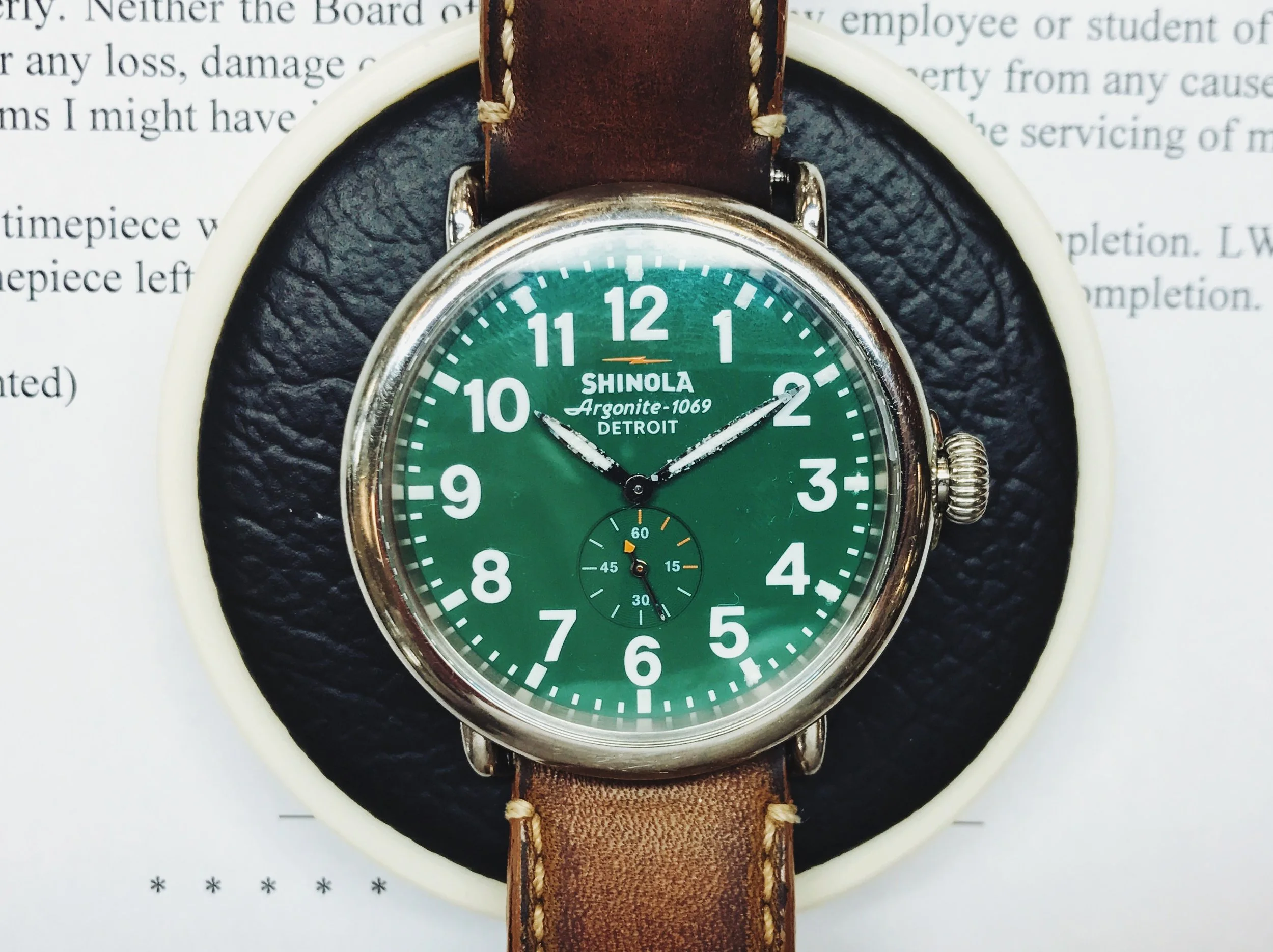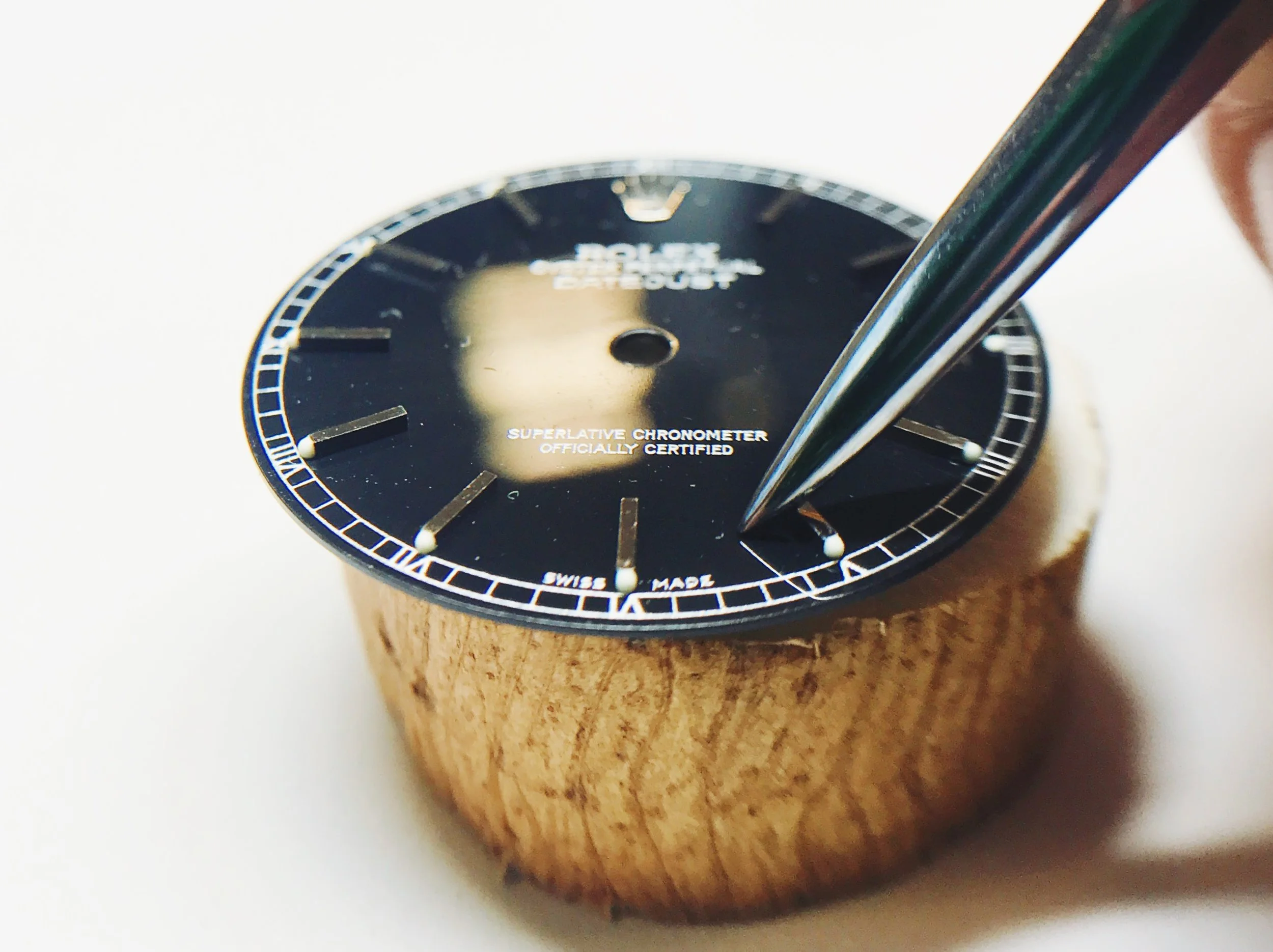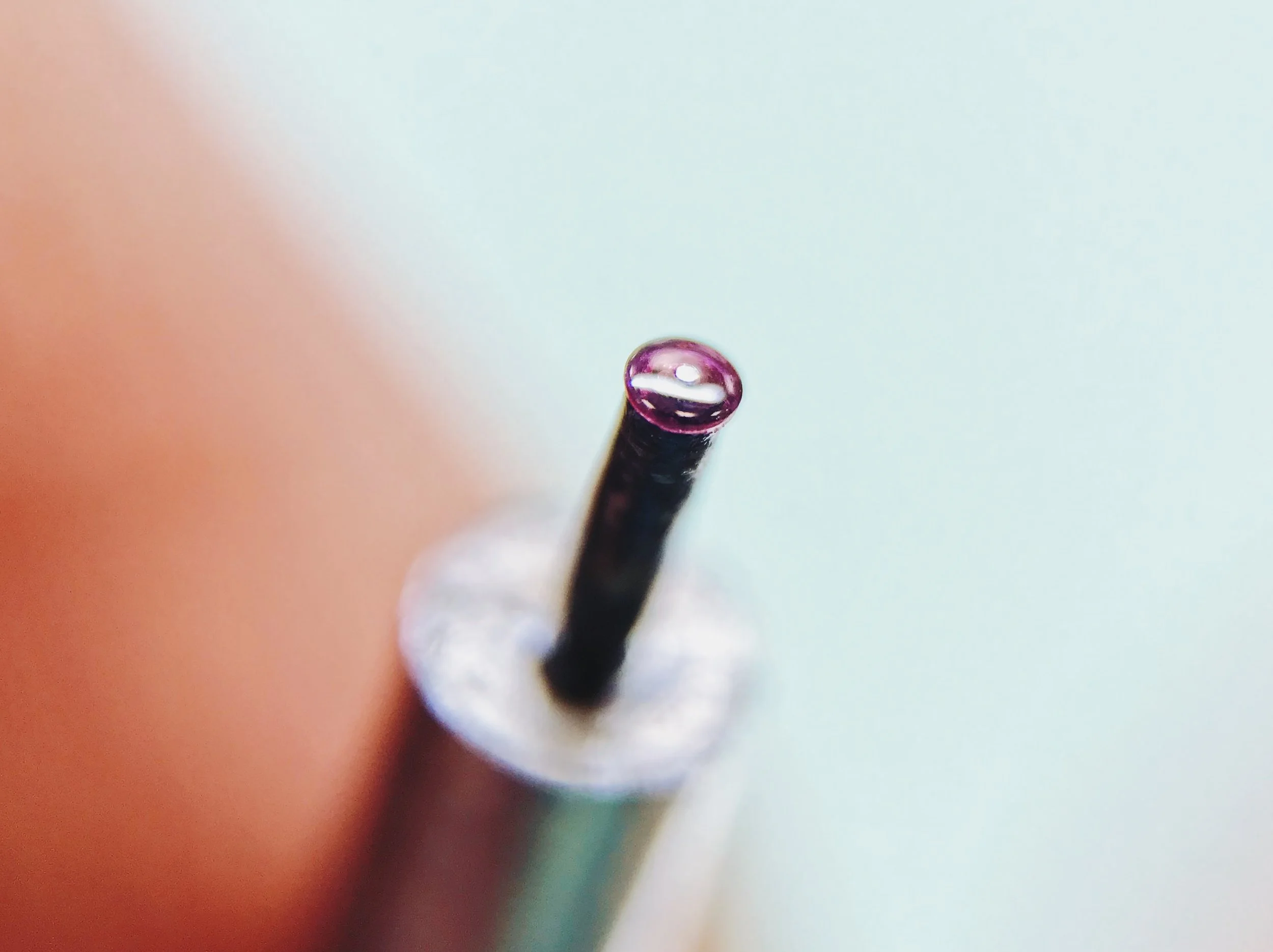Real Life Repair: Shinola Runwell

The first real life repair of my second year is an exciting and challenging one: a water-damaged Shinola Runwell.
Shinola has been making headlines for a few years now, and the company is often one of the first things people from Detroit ask me about. Without getting into the nitty-gritty, suffice it to say that Shinola produces well-made and attractive products—though they are exclusively quartz, limiting their appeal to some watch aficionados.
This particular Runwell has had a short and rough life; it was accidentally run through the washing machine, and has water damage on the dial, hands and movement. This will be a challenge.
The first step in the repair process is testing the movement. Electronic watches tend to die in the wash, but this one is still mostly alive! The quartz diagnostic machine indicated a high working power consumption, acceptable coil resistance, quartz crystal timing signals and motor pulses—yet the seconds hand failed to move. All signs point to a working, but blocked movement. It doesn't take much to stop a quartz watch, so rust is the likely culprit.
Now that's a movement spacer.
Shinola uses Ronda quartz movements, which are fabricated in Switzerland and assembled in Detroit. Though the movement is shockingly small for its large 47 mm case (this is often true for quartz calibers), it's jeweled, well-made and (mercifully) serviceable. Rust can be easily cleaned, so this movement won't need to be replaced.
The hands and dial are a different story. The water appears to have interacted with the lume, causing it to bubble, blister and flake all over the place. Polished hands are just desperate to show any scratches caused by cleaning, and matte dials are notoriously sensitive to the slightest touch. Delicacy is the name of the game, here.
To clean the hands, I removed them and mounted them on a small smoothing broach for access, and then began breaking the lume free. The crusty material is extremely brittle, so it shattered and flaked off easily... Once it was broken. Brushes were too delicate, so I used an acrylic plexi-stick to break the crust, a piece of pegwood to gently scrape it away and a leather buff stick to polish out any haze. Aside from some minor pitting underneath the worst of the corrosion, I was able to remove almost all of the damage.
The dial was home to significant lume damage as well, but this repair was more delicate. After using a tweezer or scribe to break the bubbles, I blew the debris away with an air blower and mopped up the remains with Rub-Off.
Some of the stains left unfixable "shadows" in the rough matte surface of the dial, but they're essentially invisible without magnification.
While I couldn't get absolutely every bit of damage out of the dial and hands, they're significantly better than they were, and they're ready to go back out into the wild.
With the movement cleaned of rust and serviced, the case buffed and polished and the dial and hands restored, this watch is ready to return to its happy owner!
Watchmaking student at the Lititz Watch Technicum, formerly a radio and TV newswriter in Chicago.













